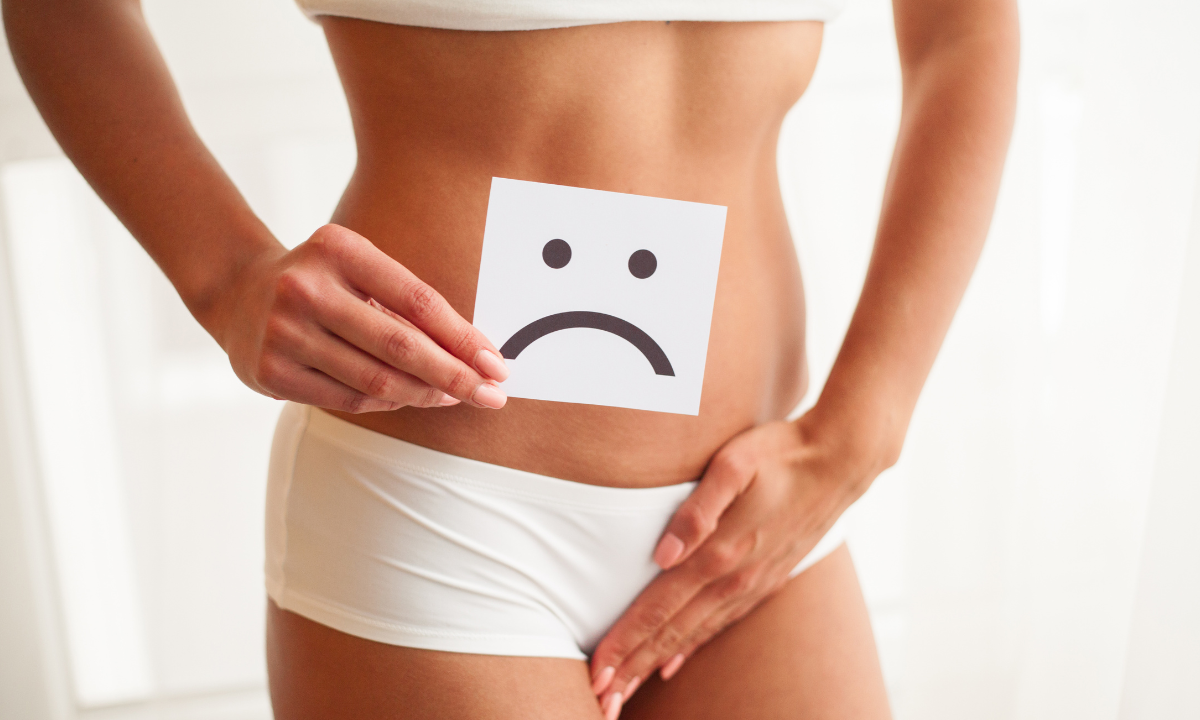Have you ever felt discomfort or pain in the area between your genitals and your anus? This area, known as the perineum, supports your pelvic organs and is involved in daily functions such as urination. When it becomes painful, even simple activities like sitting down can become uncomfortable.
Understandably, pain in the perineum can cause you to worry. So, let's explore what might be causing your pain and how you can manage it to improve your daily comfort.
What is perineum pain?
As the name suggests, perineum pain is a sensation of discomfort or pain in the area between the genitals and the anus.
The perineum is made of layers of soft tissues, including skin, connective tissue, fatty tissue, and muscles that form the lower part of your pelvic cavity and support your daily activities, such as:
Sexual sensation and function
Urinary and digestive control
Supporting pelvic organs such as the bladder, uterus (in women), and rectum
Although perineum pain can affect both genders, this condition is more common in women after vaginal childbirth. This is because the perineum will stretch during labour to allow the baby to pass, which can lead to tears that cause pain.
Because the perineum plays an important role in your daily activities, pain in this area shouldn't be ignored.
What are the symptoms of perineum pain?

Perineal pain affects both men and women and may vary depending on the root cause. However, both may experience many similar symptoms, including:
Pain, aching, burning, or throbbing sensations in the perineum
Swelling and redness in the perineal area
Discomfort when you sit for too long
Painful sexual intercourse
Numbness, tingling, or a "pins-and-needles" feeling
Overreaction to touch or pressure when you’re doing activities such as cycling
Pain in the lower abdomen, genitals, anus, pelvis, and lower back region
Pain or difficulty during urination or bowel movements
However, if you experience any of the following signs, it’s recommended that you see a doctor as soon as possible:
Fever
Discomfort that is severe, doesn’t go away, or keeps getting worse
Pain that interferes with your daily life, including sexual activity
Unusual or excessive vaginal bleeding in women
Difficulty passing urine or stool
Pus or foul-smelling discharge from the genital or anal area
If you’re experiencing any of these symptoms, especially the more concerning ones, our specialists at Thomson are here to help. Schedule an appointment with Thomson Medical today to get the right diagnosis and treatment.
Our specialist
Loading...
What can cause perineum pain?
The causes of perineum pain can vary from person to person. Here’s a breakdown of some common underlying conditions and their symptoms.
| Cause | How it leads to perineum pain | Signs you might notice |
|---|---|---|
Bacteria irritate the bladder and urethra (the tube that carries urine out of the body). This irritation can spread to nearby areas like the perineum. | Burning sensation during urination, constant urge to urinate, lower belly or perineum discomfort, and cloudy or strong-smelling urine | |
Interstitial cystitis | The bladder becomes inflamed without infection, often due to chronic irritation, nerve sensitivity, or defects in the bladder lining. The pressure can extend to nearby areas, including the perineum. | Ongoing bladder or pelvic pain, frequent or urgent need to pee, pain during intercourse |
Perineal injuries | Falling during sports or experiencing external impact to the perineum can bruise or strain the soft tissues, sending pain signals to the brain. | Soreness, swelling, and sometimes visible bruises |
Abscess | A bacterial infection can cause a pocket of pus to form under the skin. This buildup stretches the tissue and presses on nerves near the perineum. | A red, swollen lump that’s painful to touch, sometimes with pus discharge |
Pelvic floor dysfunction | The muscles supporting the bladder and bowel become too tight or weak, creating pressure or pain in the pelvic area. | A heavy or tight feeling in the pelvic region, pain during sexual intercourse, or trouble controlling bladder or bowel movements |
Haemorrhoids | Swollen blood vessels around the anus or rectum put pressure on nearby nerves, and the pain can spread to the perineum. | Pain, burning, or heaviness between the anus and genitals, pain when sitting, light bleeding after a bowel movement
|
Pudendal nerve entrapment | The pudendal nerve, which gives feeling to the genitals and perineum, becomes pinched or irritated, often from sitting too long, cycling, or injury. | Burning, tingling, or sharp pain in the perineum or genitals that worsens when sitting |
Prostatitis (men) | The prostate gland (located below the bladder) becomes inflamed and presses on nearby nerves and tissues connected to the perineum. | Pain in the perineum, groin, or lower back; painful urination or ejaculation |
The nerves around the vulva become overly sensitive or irritated, sending pain signals to the perineum. | Burning or stinging around the vulva or perineum; pain when sitting, during sexual intercourse, or with direct touch | |
During delivery, the tissues and nerves in the perineum can stretch or tear, leading to ongoing pain or soreness. | Pain, swelling, or bruising around the perineum; discomfort lasting days or weeks when sitting, walking, or having intercourse |
How can perineum pain be treated?

Self-care and home remedies
If the pain isn’t serious, you don’t always need a doctor to start feeling better. A few simple home remedies and self-care habits can help reduce pain and speed up healing.
Sitz baths:
Soaking in warm water for 10 to 15 minutes a few times a day will help your muscles relax and the swelling go down.
Cold packs:
Putting a cold compress on the perineal area can help calm down swelling and numb pain.
Painkillers:
You can use over-the-counter drugs like paracetamol or ibuprofen to alleviate mild to moderate discomfort.
Prevent constipation:
Eating a lot of fibre and drinking a lot of water help keep bowel motions regular, which relieves pressure and tension on the perineum.
Gentle stretching or pelvic floor exercises:
If your pain is caused by tight muscles, simple stretches or guided pelvic floor exercises can help them relax.
Medical treatments
If the pain gets worse over time or keeps coming back, it’s a good idea to see a doctor to undergo a physical exam and find out the exact underlying cause.
Antibiotics:
If your pain is caused by a bacterial infection like a UTI or abscess, antibiotics can treat the root cause.
Prescription creams or numbing sprays:
Topical treatments can help reduce localised pain and irritation.
Local nerve blocks:
In cases like pudendal nerve entrapment, an injection near the nerve can temporarily relieve pain and inflammation.
Physical therapy:
A pelvic floor physical therapist can help identify muscle imbalances, teach relaxation techniques, and provide exercises to strengthen weak muscles.
Surgical interventions:
Rarely, severe cases such as persistent nerve entrapment or large abscesses may require minor surgery to correct the problem.
Lifestyle adjustments
Here are some lifestyle changes you can make to help reduce perineum pain and prevent it from getting worse:
Avoid sitting for long periods; use a soft cushion if needed.
Wear loose, breathable clothing to reduce friction and pressure.
Take short breaks to stretch if you sit for work or commute.
Monitor your symptoms and keep track of what triggers pain, so your doctor can adjust treatment accordingly.
If your pain is persistent or keeps returning, don’t wait to get help. Schedule an appointment with Thomson Medical today to receive a personalised assessment and treatment plan that can help you recover comfortably and safely.
FAQ
How do you treat perineal pain?
Many cases improve with rest and self-care, which allows your body to heal naturally. You can also ease discomfort at home by using these methods:
Cold packs or witch hazel pads
Sitz baths in warm water
Over-the-counter pain relievers such as acetaminophen or ibuprofen
Gentle cleaning with a peri-bottle
If the pain is severe or persistent, a doctor may recommend numbing sprays or stool softeners to make bowel movements less painful.
How to relieve pelvic pain during pregnancy?
Pelvic pain is common during pregnancy, but you can manage it with a few simple adjustments:
Maintaining good posture
Avoiding movements that trigger pain
Using pelvic support like a pillow between your knees while sleeping or a pregnancy support belt
Gentle prenatal exercises such as walking, swimming, stationary cycling, and prenatal yoga
Traditional Chinese practices such as acupuncture or herbal medicine
Always check with your healthcare provider before trying new methods to make sure they’re safe for you and your baby.
Can men and women experience perineum pain differently?
Yes. While both men and women can feel pain in the perineum, the causes often differ.
In men, it’s commonly linked to prostate inflammation, urinary infections, or pudendal nerve pressure. In women, it’s more often related to childbirth injuries, vaginal infections, or pelvic floor muscle tension.
The pain may also feel different:
Men might notice aching behind the scrotum or during urination.
Women may feel burning or soreness around the vaginal opening, especially when sitting or during sex.
Is perineum pain after childbirth normal?
Yes, especially after a vaginal birth with a tear or episiotomy. Soreness is expected for a few weeks, and full healing usually takes up to six to eight weeks. You should contact your doctor if the pain is severe, worsening, or comes with swelling, unusual discharge, or signs of infection.
Can lifestyle habits affect perineum pain?
Your daily habits can make a noticeable difference in how perineum pain develops and heals:
Physical strain:
Activities like high-impact sports, carrying extra weight, or dealing with constipation or obesity can make perineum pain worse.
Unhealthy habits:
Smoking, stress, poor sleep, and a bad diet can make pain worse or slow healing.
Keeping your body healthy can go a long way in preventing or easing perineum pain. Simple habits like moving regularly with gentle exercise, stretching, and paying attention to your posture can help reduce strain on your perineum.
Can stress or pelvic floor tension cause perineum pain?
Stress can cause the pelvic floor muscles to tense up, which often leads to pain. When your body goes into “fight or flight” mode, these muscles tighten and may become overactive.
Over time, this can result in pain, urinary or bowel issues, and sexual discomfort. Relaxation techniques, breathing exercises, and pelvic floor therapy can help relieve tension.
The information provided is intended for general guidance only and should not be considered medical advice. For personalised recommendations and tailored advice based on your unique situations, please consult a specialist at Thomson Medical. Request an appointment with Thomson Medical today.
For more information, contact us:
Thomson Specialists (Women's Health)
Thomson Women's Clinic (TWC)
- Novena:
6592 6686 (Call), 8611 8986 (WA) - Bukit Batok:
6569 0668 (Call), 8686 3525 (WA) - Choa Chu Kang:
6893 1227 (Call), 8282 1796 (WA) Jurong:
6262 8588 (Call), 6262 8588 (WA)- Katong (female doctor):
6970 2272 (Call), 8611 9020 (WA) - Punggol:
6243 6843 (Call), 8811 0328 (WA) - Sembawang: 6753 5228
- Sengkang: 6388 8125
- Serangoon (female doctor): 6382 3313
- Tampines: 6857 6266
- Tiong Bahru: 6276 1525
